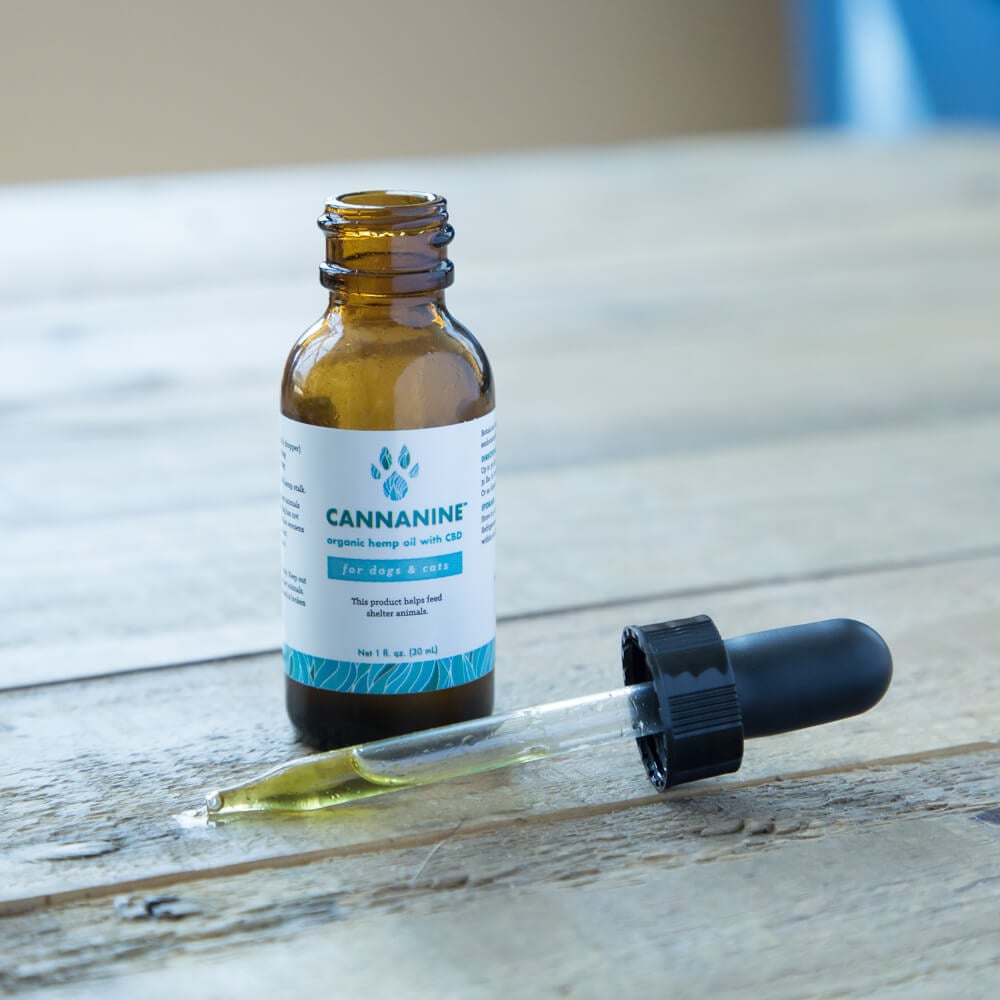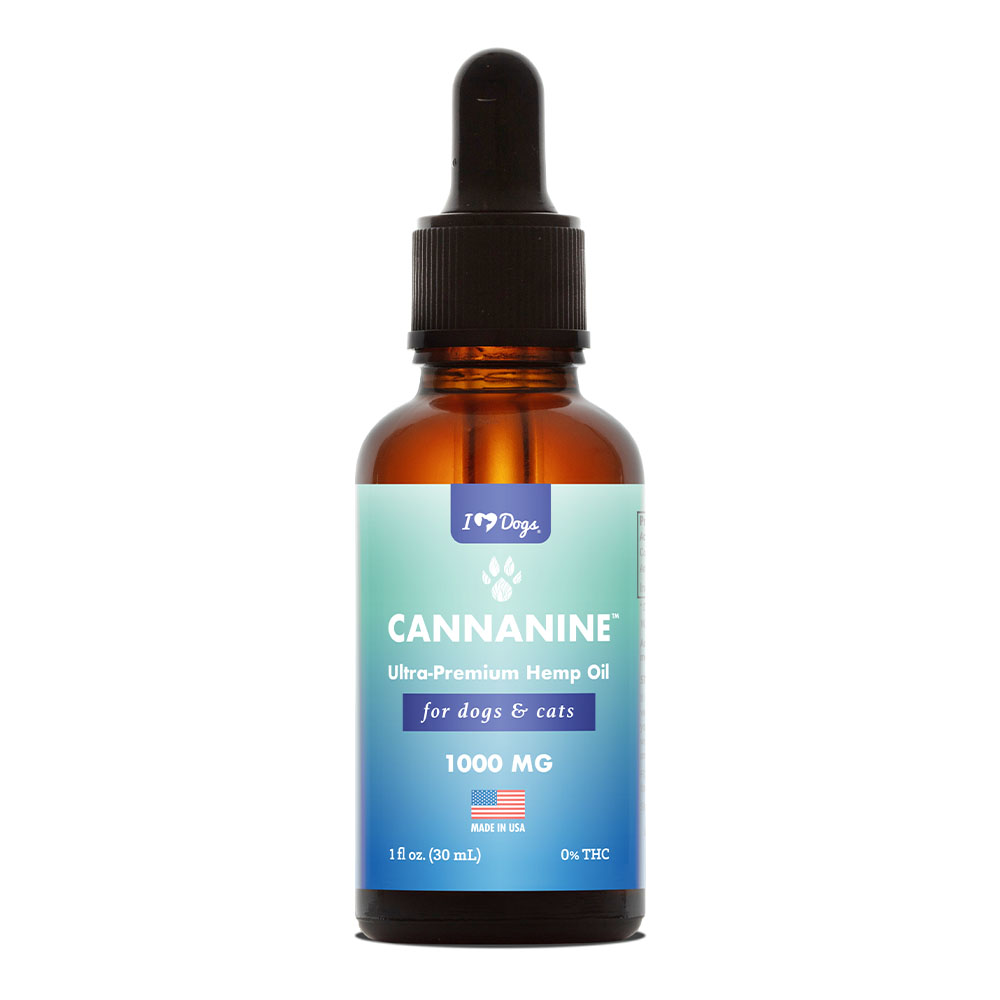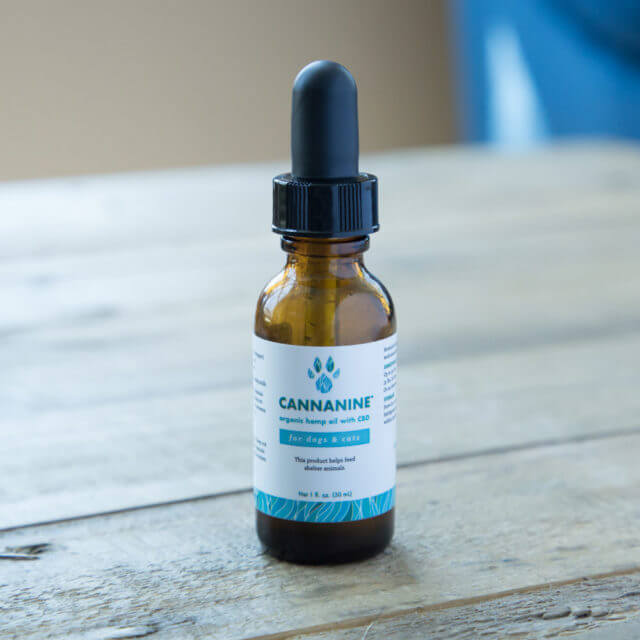Best CBD For Mobility Support In Dogs
The Mobility Support For Your Furry Friend.
Research suggests at least 60% of dogs over the age of 7 suffer from some level of mobility problems. Cannanine cbd oil, treats, and chews have properties that promote normal joint function and flexibility, making it easier for dogs to move around more freely – and happier too!





CBD Joint Pain Relief For Dogs
Our cbd hemp oil is specifically formulated to target your dog’s hip & joint pain, and provides relief from discomfort. A dropper per day, keeps the pain away!
This product has turned back the years for my 11-year-old dog. It has been the most amazing thing to witness. My husband & I have both been spreading the word about this product in hopes it can help other elderly dogs turn back time!
Jared

Made In USA

Veteran Owned

100% Money Back Guarantee
Articles On CBD For Dogs
Best Pet CBD For Promoting Mobility
Dogs tend to be quite stoic, hiding the signs of pain until they simply can’t anymore. Decreased mobility keeps them from doing the things they love most. It can lead to depression, stress, and even decrease their will to live. Of course, every dog lover wants to keep their pup around as long as possible, but isn’t the quality of that time just as important as the length?
CBD For Dogs With Bad Joint Function
Using CBD oil for increased joint function can improve your dog’s joint health and reduce its immobility with the endocannabinoid system or ECS. The ECS is a system of receptors throughout the body of all mammals, including the brain, organs, connective tissues, glands, and immune cells.
It performs different tasks in each tissue, such as pain regulation, sleep, immunity, mood, and much more. The main goal of the ECS is to restore and maintain stability within the body (homeostasis) no matter what external forces come along.
Your dog’s body makes and utilizes its own endocannabinoids, but sometimes they just aren’t enough. External cannabinoids like CBD bolster the ECS, helping it perform its duties more effectively.

Can dogs take CBD oil for increased joint function and flexibility?
Some pet parents worry that CBD is not safe for their dogs. They are right to be concerned, as many inferior, unregulated products litter today’s market. However, it is important to remember that CBD comes from hemp, not marijuana, and is therefore naturally low in THC, the cannabinoid that gets marijuana users high.
Dogs are particularly sensitive to THC and are much more likely to suffer toxic reactions than humans. For this reason, CBD products for dogs cannot legally contain more than 0.03% THC. However, some manufacturers go the extra mile to have every trace of THC removed from their oils, chews, and creams.
Responsible dog CBD companies also have their products tested for safety by a third-party lab. There, scientists ensure that the THC content is low (or nonexistent) and that there is no trace of other potential toxins such as mold or heavy metals. CBD oils of this caliber are not only safe, they are also good for dogs with mobility issues.
What are the benefits of CBD oil for promoting mobility?
You have many options when it comes to aiding in your dog’s joint function, including steroids, non-steroidal pain relievers (NSAIDs), dietary supplements, and of course, CBD. However, choosing CBD may be the most beneficial choice because:
- It supports your dog’s normal inflammatory response.
- It is considered “nature’s most powerful reliever.”
- Side effects are rare and tend to be mild.
- It is well-tolerated, even by dogs with bad reactions to prescription drugs.
- It is easy to administer.

How long does it take for CBD oil to work for increased joint function and flexibility?
How long it takes for your dog to feel the full effects of CBD for joint function depends on how it is given, the strength of the oil in relation to the dog’s size, and the severity of its condition. There is not always an immediate, drastic effect.
Typically, a dose of CBD starts to work within 30 minutes. For chronic issues, it may take 2 – 4 weeks of daily dosing before you see optimal results. Every dog responds differently to CBD oil, and we encourage you to start slow and start small. Here’s a general rule of thumb:
- CBD applied directly into your dog’s mouth (sublingual absorption) – Allow 20-60 minutes
- CBD given in your dog’s food or treat (absorbed in the stomach) – Allow 45 – 90 minutes
How much CBD should I give my dog for joint functionality?
Each brand of CBD oil is likely to have its own dosing recommendations. There is no standard dose. Generally, you want to start with only a few drops at a time and increase the dose until you start to see the desired health benefits. Luckily, if you’re using CBD oil that doesn’t contain any THC, it’s nearly impossible to overdose your dog.
When determining the perfect dosage of CBD for dogs, there are 3 major factors to consider:
- The potency of CBD in the oil or treat
- Your dog’s size and weight
- The benefit you’re looking to increase
Before starting a CBD regimen (or any new treatment), you should also:
- Consult your veterinarian.
- Consider your dog’s overall health to help determine how they will react to CBD.
- Find a high-quality CBD oil with a Certificate of Analysis (COA) showing it is free of THC and potential toxins.
- Choose the correct CBD strength for your dog’s size and health.

What research has been done on CBD for dogs with decreased mobility?
Historically, CBD research has been confined to human use. However, thanks to the rising popularity of use in pets, CBD trials specifically conducted with canine and feline subjects are becoming more common. Here are a few with very promising results in the area of joint flexibility for dogs:
Study #1: Increased Comfort & Activity in Dogs (Cornell University)
Cornell University researchers found CBD increased the comfort and the activity of dogs suffering from decreased joint function, according to a study published in July of 2018 in Frontiers in Veterinary Science. This clinical study suggests that 2 mg/kg of CBD twice daily can help increase comfort and activity in older dogs or dogs with reduced mobility.
Study #2: Improve Functional Performance (Liberty Leaf)
Released in August of 2018, results from this randomized, placebo-controlled clinical trial demonstrated that dogs with diagnosed osteoarthritis receiving a daily dose of only 0.3 mg per kg of proprietary CBD-infused oil formulation for four weeks showed improved functional performance.
Study #3: Improved Mobility (Colorado State University)
An April 2020 Colorado State University clinical trial studied the impact of their hemp-derived Cannabidiol (CBD) product on dogs suffering from chronic pain. The 90-day study was overseen by Robin Downing, DVM, and included 32 dogs that had suffered for a minimum of 3 months. The study found that the addition of Full-spectrum Hemp (CBD) oil resulted in notable benefits (improvements in mobility, and improved quality of life) for 94% of the study dogs.
Study #4: Daily Cannabidiol for the Treatment of Canine Joint Function (Baylor University)
Published in the September 2020 edition of the scientific journal PAIN, this randomized, double-blind, placebo-controlled study found that using hemp-derived CBD to promote mobility is safe and effective for dogs. Study author Matthew Halpert with the faculty of pathology and immunology at Baylor University went so far as to say, “I openly admit that I was surprised at how quickly we saw such large results. I would not have expected to see too much of anything in just one month.”

What is the best CBD for increasing mobility in dogs?
To skirt regulations, many sellers of hemp products label them as PCR oil or simply hemp oil, and refuse to state how much cannabidiol (CBD) in milligrams is in their product. This can be very confusing, as the proper dosage can make all the difference. Cannanine™ Organic Full Spectrum CBD Oil from Hemp comes in three strengths to ensure the perfect dosage for dogs of all sizes and ailments. Everything you need to know about the makeup of Cannanine products is plainly stated on the label, which is why we were awarded a Clean Label Project® Purity Award for truth in advertising.

In terms of safety, Cannanine contains no THC, which means your dog can get all the benefits of CBD oil made from real organic Colorado hemp without getting intoxicated or suffering a toxic reaction.
It also features a patented Nano-Sized Microemulsion for maximum bioavailability and absorbability. Made from human-grade ingredients, each batch of Cannanine is tested and found to be free of heavy metals, harmful bacteria, yeast, mold, and other toxins.
If you are searching for a safe, high-quality CBD for your dog’s joint pain, Cannanine is your best choice.
These statements have not been evaluated by the Food and Drug Administration. This product is not intended to diagnose, treat, cure, or prevent any disease. The information on this website is not intended to replace a one-on-one relationship with a qualified healthcare professional.
Does CBD Help Dogs With Increased Mobility?
Why CBD Oil Is Becoming So Popular For Dogs With A Decrease In Mobility
Fatigue, trouble standing, limping—all these are signs your dog has joint pain. Dogs of all ages suffer from the effects of this chronic condition, and it’s enough to seriously lower overall quality of life. Typical methods of help include surgery, steroid injections, and regular pain medication, but there’s a new player changing the game.

CBD oil is gaining popularity in the world of holistic veterinary science as a safe and effective alternative. It’s used to promote mobility and a sense of calm, and dog owners are experiencing particularly positive results for joint flexibility and function.
In July of 2018 a Study by Cornell University showed that CBD Oil administered twice daily at 2 mg/kg of dog weight can help increase mobility.
Most important, CBD comes without the negative side effects of other more conventional treatments, including pain relieving drugs such as NSAIDS. Here’s why it’s catching people’s attention.
What is CBD Oil From Hemp?
As a form of cannabis, hemp contains dozens of compounds called cannabinoids. Of those compounds, there’s a type called CBD. Therapeutic, non-psychoactive, and all-natural CBD is extracted from hemp and isolated to create the tincture commonly known as CBD oil.3 While cannabis has been used for medicinal purposes for thousands of years, CBD oil is only recently catching the public’s attention.
Unlike medicinal marijuana, CBD oil contains only negligible amounts THC and cannot produce a high.1 It has all the therapeutic benefits of marijuana but without the mind-altering characteristics. As holistic vets explore more about CBD and scientists continue to study its effects in the lab, we’re learning how effective it can be in treating a long list of both human and canine ailments.

CBD and the Endocannabinoid System
Every mammal has an endocannabinoid system responsible for maintaining the body’s healthy balance.4 A network of cannabinoid receptors facilitate communication throughout the body to control health and promote wellness. As a type of cannabinoid, CBD oil works by stimulating these receptors and triggering specific bodily responses. The two-way communication between receptors controls immune response, and CBD oil is an all-natural way to steer health and maintain the perfect balance.

What Dog Owners Love About CBD
No dog owner wants to watch their aging pet slow down due to mobility problems. Surgery is expensive and comes with a long recovery, steroids have side effects, and helping a dog lose weight is not a guaranteed way to bring them relief. With few satisfactory treatment options, CBD oil is offering dog owners an all-natural and effective alternative. The extremely low levels of THC aren’t enough to make a dog high, and with no related toxicity, overdosing on CBD oil from hemp is impossible. It’s legal in all 50 states, and dog owners are sharing testimonies of seeing noticeable results in their dogs’ quality of life after administering only a few drops.

What Brand of CBD Oil is Both Safe and Effective for My Dog?
When choosing a CBD oil, we strongly recommend choosing a product that is 100% THC free, which is a bit hard to find because the process is expensive. The brand that iHeartDogs recommends and offers in our store is Cannanine™ Organic Hemp Oil with CBD.
If you’d like to learn more about CBD for dogs, we’d encourage you to view our comprehensive guide.
Sources:
1. All The Best Pet Care
2. Pet Health Network
3. PetMD
4. Wellspring
These statements have not been evaluated by the Food and Drug Administration. This product is not intended to diagnose, treat, cure, or prevent any disease. The information on this website is not intended to replace a one-on-one relationship with a qualified healthcare professional.
Frequently Asked Questions About CBD Oil for Dogs with Decreased Mobility.
What are the ingredients/properties of CBD for dogs with joint discomfort?
The main ingredient of CBD oil, also known as cannabidiol oil, is the cannabis plant. The cannabis plant is grown to maturity where then it is broken down to extract CBD oil. It is important to make a distinction between CBD oil and other cannabinoid oils like tetrahydrocannabinol (THC). Where THC can create a euphoric high sensation, CBD does not. This is because although both THC and CBD affect cannabinoid receptors in the body and the brain, they affect different ones. Cannabinoid receptors are located throughout the entire body. They can be responsible for regulating physiological processes such as pain-sensation, mood, memory, appetite, and the body’s health response. It is the CB2 receptor that is responsible for regulation. CBD oil works directly with the CB2 receptor, meaning, if you are looking to use CBD oil to help your pet with their joint discomfort, the CBD may promote increased joint function and flexibility.
Does CBD help dogs with joint discomfort?
Yes, CBD oil has been shown to help dogs with joint discomfort by promoting flexibility and joint function.
How long does it take for CBD oil to work for joint function in dogs?
When you are looking to use CBD to promote less stress, it can take only 30 to 60 minutes to begin to take effect. However, when you are using CBD oil for your dog’s mobility, it can take two to four weeks to begin to see noticeable changes and improvements. This is due to the fact that it takes a bit of time for the CBD to build up in your dog’s system.
Can dogs have CBD oil for joint discomfort?
Yes, overall CBD oil is safe for canine consumption. There are no reports of severe or harmful reactions to the consumption of CBD products. However, there are a few side effects that you may notice in your pet if you start giving them CBD oil.
Potential side effects of canine CBD consumption:
- Lowered blood pressure: Depending on the size of the dose, a sudden drop of blood pressure can create a brief moment of dizziness in your pet.
- Drowsiness: The calming effect of CBD consumption may create noticeable signs of slight drowsiness.
- Dry mouth: CBD consumption can decrease the production of saliva. The result is increased thirst.
Although you may want to be aware of these potential side effects, ultimately they are relatively harmless. Making sure that you are sticking with the proper dose will help reduce the intensity of symptoms.
What are the benefits of CBD oil for joint discomfort?
The main benefits of using CBD oil for your dog’s joint discomfort can include increased mobility, flexibility, and increased function. Having increased mobility can allow your pet to live a far more enjoyable life without being bogged down by the terrible symptoms associated with joint discomfort. When your pet is experiencing discomfort, it may be evident in their behavior and mood.
What research is there on CBD for dogs with discomfort?
The first was conducted by the Baylor College of Medicine which was a randomized, double-blind, placebo-controlled study. The study was conducted over 4-weeks with 20 large dogs. Dogs that were part of the study were evaluated by both their veterinarian and their owners. The dogs that did not receive the placebo had shown an improvement in mobility with increased flexibility and movement. Another study that was published in the journal PAIN, showed similar results.
Why Dogs’ Joints Ache in Colder Weather and How CBD Can Help
You imagine winter as watching your pup prance and play in the snow, but if your dog suffers from chronic joint discomfort, those winter months might be harder than you expect. Cold weather can worsen symptoms related to joint issues and leave your dog desperate for relief. A few days of cold weather later, your dog could be limping in pain. Some pup parents resort to prescription medications to help their dogs deal with the ache. But with a long list of side effects, those drugs aren’t for everyone. CBD oil, on the other hand, is a naturally effective way to help dogs get through the coldest months of the year. Before your dog can enjoy the winter wonderland, you need to understand why dogs’ joints ache in colder weather and how you can help.
Why Dogs’ Joints Ache in Colder Weather
Scientific evidence of why dogs’ joints ache in colder weather is scarce, but veterinarians rely on anecdotal evidence given by people who struggle with similar kinds of discomfort. The Weather Channel reports two-thirds of people with chronic joint discomfort living in major cities across the U.S. believe their issue is related to the weather. Most vets believe dogs experience the same kinds of changes. Also similar to humans, weather-related joint discomfort seems to affect senior dogs the most. Exactly why cold weather affects joints has never been proven, but doctors and researchers have a few ideas.
Barometric Pressure
Put simply, barometric pressure, or atmospheric pressure, is the amount of force pushing down on a surface due to the weight of the atmosphere. Because there is always atmosphere above your head while you’re here on Earth, there is always barometric pressure pushing you down. When you’re at the beach, you endure significantly more pressure than you do when you’re standing on top of a mountain because there’s more atmosphere towering over your head. Barometric pressure also changes with the temperature. Cold air is more dense than warm air, and gas molecules move more slowly. With fewer molecules colliding into each other, air pressure drops. Most people don’t notice the effects of barometric pressure. People (and dogs) with chronic joint issues, however, feel it in their bones.
According to The Veterinary Expert, low barometric pressure (like the kind associated with cold weather and high humidity) allows soft tissue in the joints to swell. This makes them feel stiff, and joints affected by bad joint function are more uncomfortable than usual. If your dog’s joints are already suffering from wear and tear, the change in pressure can make them feel especially sensitive.
A Less Active Lifestyle
Another reason why dogs’ joints ache in colder weather is the fact no one wants to exercise when it’s cold out. Everyone is more likely to cuddle on the couch than brave fierce winter weather. That lack of exercise comes with consequences.
When joints are stiff and achy, movement is one of the best remedies. Both human doctors and veterinarians urge patients with joint pain to stretch and exercise regularly to keep joints supple. But when the snow is falling, outdoor exercise loses its appeal. The situation is made worse thanks to cold air making joints feel “frozen.” Stiff joints are uncomfortable joints, and uncomfortable joints perpetuate the cycle of inactivity.
The Right CBD Oil for Your Dog With Joint Discomfort
Cannanine™ Organic CBD Oil From Hemp is made especially for dogs. It’s one of the few products on the market that contains absolutely no THC. The oil is also tested to make sure every bottle is free of heavy metals, bacteria, and other toxins. It’s meant for dogs, but it’s made with human-grade ingredients guaranteed to be safe for your pup.
When your dog starts to slow down as soon as the temperature drops, there’s a good chance his joints are to blame. Cannanine™ CBD Oil can be used all year-round or only in the winter to make sure your pup is as happy and pain-free as possible. To make it even easier, Cannanine™ now comes in bacon flavored soft chews that dogs love. They can be used in place of CBD Oil as a daily supplement or in addition to provide some extra CBD as needed. A regular dose of high-quality CBD could keep your pup playing all winter long.
These statements have not been evaluated by the Food and Drug Administration. This product is not intended to diagnose, treat, cure, or prevent any disease. The information on this website is not intended to replace a one-on-one relationship with a qualified healthcare professional.
Is Your Dog Suffering In Silence From Joint Discomfort?
With no voice of his own, there’s a lot you probably don’t know about your dog. He can’t tell you what he’s thinking or how he’s feeling, but it’s your responsibility to figure it out anyway. Sometimes it’s as easy as filling up a bowl of food, but more often, your dog’s secrets are harder to uncover.
Joint discomfort is one of those secrets dogs are especially good at hiding. They live with it for months and even years without their families knowing. As they fight to mask it, it gradually gets worse. Eventually, it’s so bad they can no longer pretend everything is okay. By this point, there isn’t a lot that can help—the damage is done.
You can avoid this scenario by paying close attention to your dog’s behavior and actions. He might be giving you subtle clues that something isn’t right. It’s your job to answer the question, “Is my dog suffering from joint discomfort?”

What Causes Joint Discomfort?
Joint issues most often affects older dogs, but that doesn’t mean younger dogs are immune. Dogs as young as one year old can struggle with this in one or more of their joints. Regardless of age, joint discomfort happens because the cushion in the joints (called cartilage) wears away.
In healthy dogs, cartilage is supple and elastic and allows the bones in joints to move freely and painlessly. As that cartilage deteriorates, it loses its lubricating properties. The bones are left to grate and grind against each other. This causes discomfort and inhibited movement.
Damage to the cartilage is progressive, and once it starts, it cannot be undone. It can only get worse until the cartilage is completely gone. Sometimes it starts with an injury that puts extra strain on a joint, and other times, genetics are to blame. Most often, however, cartilage suffers from normal wear and tear as a dog ages. The hips, knees, shoulders, and elbows are the joints most commonly affected, but joint discomfort can happen anywhere, including the spine.

Is Your Dog Suffering?
For dogs, hiding pain is instinctual. Researchers think it relates back to life in a pack where weak pack members risked slowing down the pack or being left behind. You know you would never leave your dog behind because of joint pain, but that doesn’t change his instinct to keep quiet. He does his best to hide it, but there are subtle hints that a dog is suffering. Here are a few of the most common signs:
- Unwillingness to exercise or do other activities they used to enjoy
- Slow to stand up
- Trouble climbing stairs
- Limping
- Yelping or whining when touched
- Obsessive licking of specific joints
- Sudden and unexpected aggression
As it gets worse, so will these symptoms. If you notice your dog showing more than one sign on this list, there’s a good chance he’s secretly suffering.
What You Can Do About It
Once a dog starts experiencing joint discomfort, there is no cure. It will be something they’ll have to cope with for the rest of their life. But that doesn’t mean they have to live the rest of their life in agony. There are several ways to control and manage this problem. The first step is to talk to your veterinarian. Sometimes prescription medications can help, but also talk to your vet about more natural ways to bring your dog relief.

Weight Management
Obesity not only makes joint pain worse, it can even be the cause. Joints are in charge of holding up the body, and when that body has a lot of extra fat, the job gets significantly more difficult. Extra weight puts unnecessary strain on your dog’s joints, and it can hasten the deterioration of cartilage. You can slow it down by helping your pup stay at a healthy weight. Talk to your vet about what his goal weight should be and what you can do to get him there.
Regular Exercise
Whether a dog suffers from joint pain or not, regular exercise is always an important part of their health. For your dog suffering from chronic joint pain, moving around on a daily basis will help keep joints moving smoothly.
It’s important to remember, however, not all forms of exercise will be good for your dog’s joints. Fast running, long walks, and jumping will put too much strain on his compromised joints. That kind of intense exercise can make pain worse. Talk to your vet about safe forms of exercise like slow walks and swimming.
Dietary Changes
Your dog’s diet can help relieve his joint discomfort if you know what to feed him. Most vets recommend a dietary supplement including glucosamine with chondroitin. Glucosamine is one of the main “ingredients” in cartilage. It has lubricating properties that can help keep joints moving smoothly.
A daily dose of glucosamine in your dog’s dish won’t regrow his cartilage, but it will help protect what he still has. For a good supplement, check out Happy, Healthy Hip & Joint collection at iHeartDogs.com.
CBD Oil for Improved Joint Function in Dogs
CBD oil is a compound found in cannabis, and researchers and veterinarians are just starting to understand its potential for pain relief due to its soothing properties. When CBD enters the body, it bonds with specific receptors that are part of the body’s endocannabinoid system.
Responsible for all health and healing, the endocannabinoid system has receptors all throughout the body. They communicate in ways that trigger specific reactions to correct imbalances and promote healing. The result can be less discomfort and able to move more freely and easily.
Choosing CBD Oil for Your Dog with Joint Pain
When choosing CBD oil for your dog, it’s important to choose a product that is organic and made specifically for your canine friend. Cannanine™ Organic Full Spectrum CBD Oil from Hemp is made from organically grown Colorado hemp. It’s tested and retested for heavy metals, mold, and other toxins to ensure you know exactly what you’re giving your dog.
Pet owners whose dogs used to limp and whine with joint discomfort, report that they’ve started living their best lives shortly after beginning a CBD regimen. In addition to the oil that can be dripped directly on your dog’s food, there are also Cannanine™ Bacon Flavor Soft Chews. These chews are great for picky eaters and can be used in combination with the oil or in place of it. Talk to your vet about using CBD oil to promote healthy joint function and flexibility in your dog.
These statements have not been evaluated by the Food and Drug Administration. This product is not intended to diagnose, treat, cure, or prevent any disease. The information on this website is not intended to replace a one-on-one relationship with a qualified healthcare professional.


















